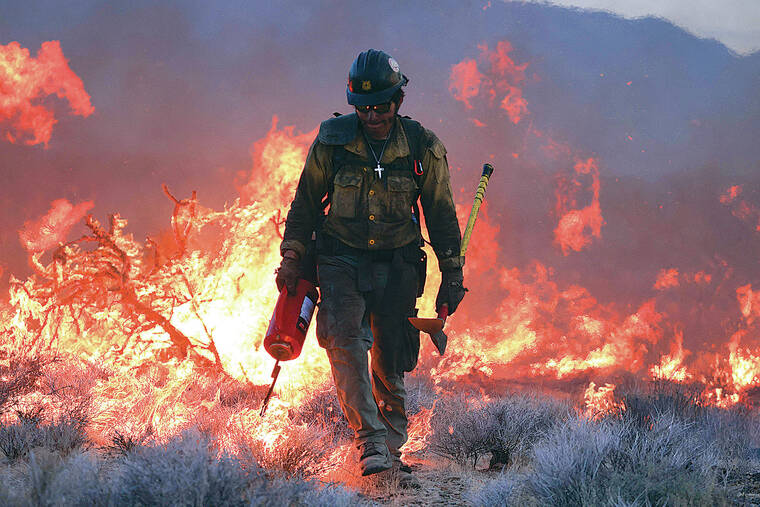California’s iconic Joshua trees are burning up fast. Replacing them might be impossible
A light rain fell on the Mojave National Preserve, where firefighters continued their nearly weeklong battle Wednesday against an unusual desert wildfire that has incinerated countless Joshua trees and threatens to forever alter California’s high desert landscape.
Crews were aided by the arrival of monsoonal moisture, which brought some rain and humidity that helped slow the spread of the 82,000-acre York fire, which was about 30% contained Wednesday.
ADVERTISING
But in many ways, the damage has already been done. The fire is the largest to burn through the eastern Mojave in recorded history, surpassing the 71,000-acre Hackberry complex fire of 2005 and searing through a delicate ecosystem already strained by invasive species and the burning of fossil fuels.
“The reality is that Joshua trees are already in a state of decline because of global warming and increasing frequency of drought,” said James Cornett, an ecologist who specializes in the species. “And then on top of that, you throw on a fire like the York fire, and these trees are not likely to recover in our lifetime.”
“In fact, I can say with the utmost certainty that the areas that burn — whether it’s Joshua trees or other plants — will never look the same in the next couple of generations, if not longer,” he said.
Although park biologists will begin to survey the damage once the flames subside, the exact number of Joshua trees lost to the York fire will probably never be known because there have been no prior surveys. And it’s hard to count ash, said Debra Hughson, deputy superintendent of the Mojave National Preserve.
“They go up like they’re soaked in diesel fuel,” she said. “They burn real well.”
What is clear, however, is that like much of California, the desert region has undergone significant changes in recent years, due largely to human activity.
Joshua trees are unique to the Southwestern United States, with the majority of their population located in California. But not even the desert-adapted trees are immune to climate change, which experts say is making it harder for young trees to become established.


